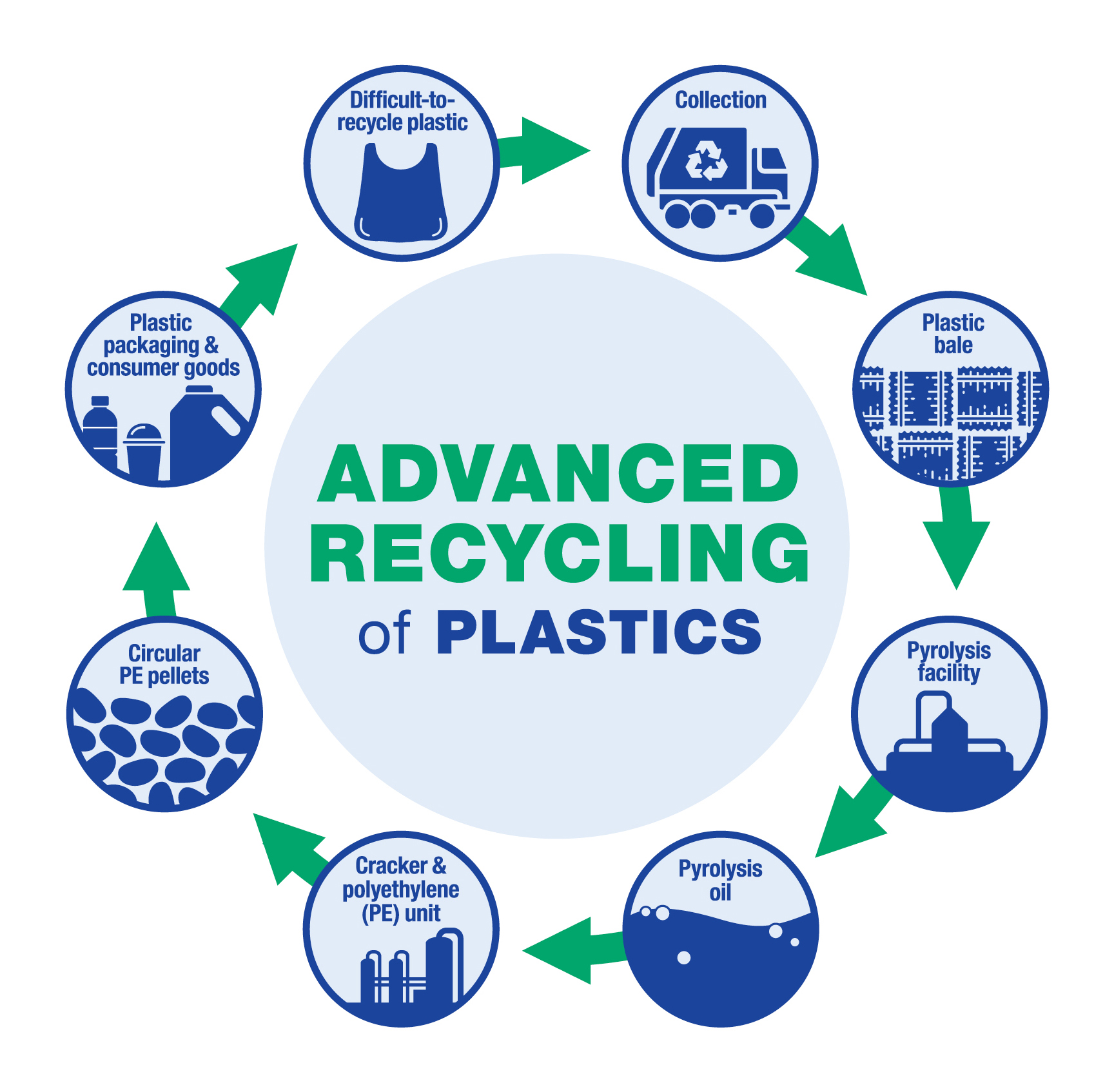With the increasing plastic pollution, the role of plastic chemical recycling methods for carbon reduction and pollution control is receiving more and more attention. The industry believes that chemical recycling can solve the root cause of plastic pollution. What is the current stage of development of chemical recycling in major countries of the world and can it be applied on a large scale?

At present, the effective treatment of waste plastics mainly includes physical recycling and chemical recycling.
The physical recycling process of waste plastics includes collection, classification, shredding, cleaning, drying, granulation and production of corresponding products, etc. It solves the problem of materialized reuse of some easy-to-handle and relatively high-value waste plastics. The products of physical recycling are difficult to reach the quality of raw plastics, and their recycling mostly belongs to downgraded use.
This technology is difficult and economically unsuitable for the treatment of low-value, mixed, contaminated plastic waste, and has low applicability. Various types of composite films, plastic bags and other disposable packaging mixed with household waste after disposal, accounting for a large proportion of plastic waste, is the “hard nut” of plastic pollution management, and is also a problem that needs to be solved urgently for the resource utilization and high-value utilization of plastic waste.
The chemical recycling process of waste plastics, as opposed to simple energy recovery by incineration, is a method of converting low-value waste plastics into high-quality oil fuels or chemical raw materials. It is becoming a focus of worldwide scientific and technological research and development. The chemical recycling can reduce the new demand for fossil fuels and is expected to be one of the main options to solve plastic pollution, help the economic circle and achieve high quality, safe and sustainable development.
The chemical recycling refers to the manufacture of petrochemical products such as new plastics by changing the molecular structure of plastics into liquid or gaseous low molecules or even monomeric small molecules. It can reduce the new demand for fossil fuels and reduce the environmental impact of plastics. When chemical recycling of waste plastics is done for the purpose of obtaining fuel and raw materials, a closed loop is formed, called the chemical cycle of waste plastics.
Chemical recycling of plastics is a method of converting low-value waste plastics into high-quality oil fuels or chemical raw materials. It is becoming a focus of worldwide scientific and technological research and development. At this stage, there are mainly technologies such as pyrolysis, gasification and depolymerization, among which, pyrolysis technology has attracted much attention from researchers.

Under the background of global carbon reduction targets, the process of recycling waste plastics continues to advance, and chemical recycling technologies for plastics are showing their vitality and innovation. According to a study by McKinsey & Company, the global recycling rate of plastics is expected to increase to 50% by 2030, of which, the proportion of chemical recycling may rise to about 17%.
Relevant foreign companies have already started using chemical recycling of plastics, in 2020, renewable energy company Neste successfully conducted several trial runs of liquefied waste plastics at its refinery in Finland. American oil and gas producer ExxonMobil built the first large-scale plastic waste chemical recycling facility in Texas, and when it is put into operation, the initial planning capacity is to recycle 30,000 tons of waste plastic per year.
At present, in the chemical recycling of waste plastics pyrolysis technology, the world’s industry is in the active exploration stage. Difficulties and major problems are low pyrolysis oil yield, high impurity content of oil products and difficulty in large-scale and long-cycle continuous and stable operation of the equipment.

In order to solve these problems, Niutech has launched active research and development and exploration. After 30 years of technical accumulation, we have successfully developed industrial continuous pyrolysis technology and equipment for waste plastics, which has the advantages of large processing capacity, high raw material inclusion and stable operation, etc. After more than ten years of stable operation, the equipment has successfully passed a number of technical certifications from the EU, Germany and the United States, and has been successfully applied in more than twenty countries and regions around the world.
Email: contact@niutech.com
Tel:86 531 86196301
